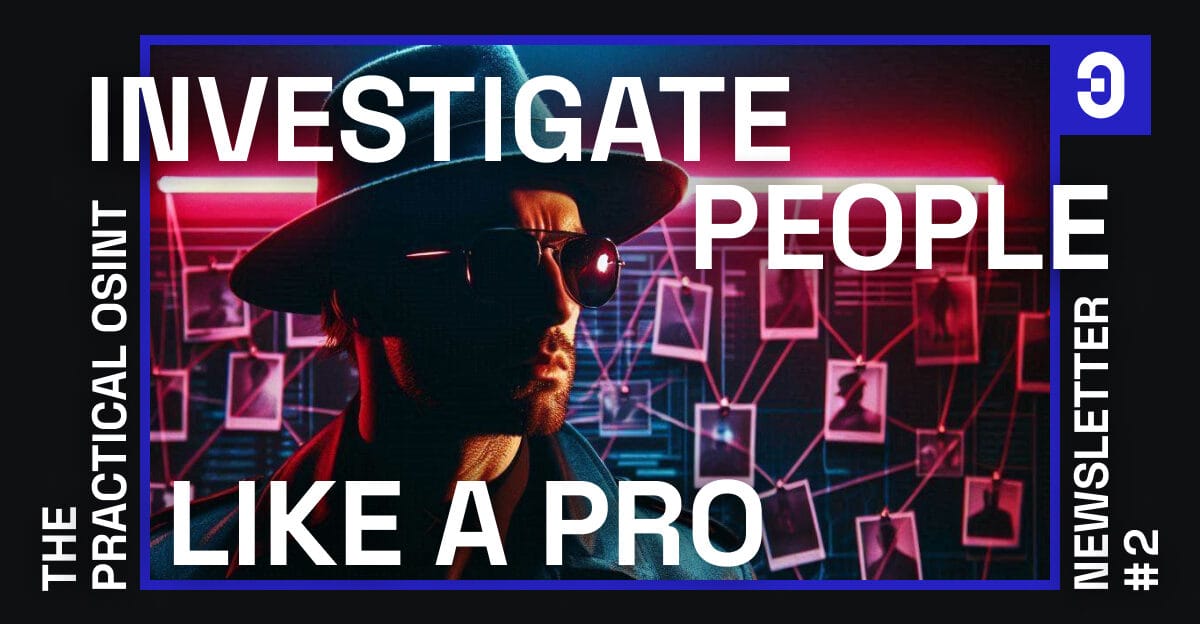The Practical OSINT Newsletter. Issue #2.
This issue will help you to improve your people investigation skills and teach practical OSINT techniques. It will also sharpen your intelligence mindset for more effective analysis.

Dear reader,
Happy New Year! 🎄
Welcome to the second issue of our newsletter which focuses on investigating people. In this issue, you’ll learn new OSINT tricks and develop a sharper intelligence mindset.
Intelligence mindset
Let’s start with one of my favorite interviews — an insightful conversation with Vlad Olaru, a Romanian cybercrime investigator. Vlad shares his expertise on various topics, including passive and active OSINT techniques. He explains that law enforcement agencies often prefer passive OSINT because it allows them to gather information without engaging with the target. The benefit is the lower risk of alerting the target. On the other hand, active OSINT requires legal approval (which can be time-consuming) and risks spooking the target, potentially jeopardizing the investigation.
I really liked this interview, because Vlad went through an intelligence cycle in detail. The intelligence cycle is a model that explains how raw data is processed and transformed into actionable intelligence. On the following image he explains the second step of the cycle – collection:

By the way, UK OSINT Community recently posted several interviews. Each video contains many good insights and I extracted one key lesson from each of them. Here are lessons you should remember and practice:
- OSINT for Missing People Investigations: Always use the most current information in your investigation. If a missing person has changed their name or other aspects of their identity, adjust your search accordingly. For example, if "James" is now "Jane," focus your search on "Jane." Understanding the individual’s lifestyle will also give you a clearer picture of where to look.
- OSINT & Investigative Journalism: When investigating people, it’s crucial to verify the authenticity of photos and media they appear in. Recommended tools include Forensically, Video Cleaner, Ghiro, and Sherloq. These tools help you validate your findings before jumping to conclusions.
- OSINT Techniques to Find the FBI's Most Dangerous Fugitives: Use court records to uncover personal information that may not be available elsewhere. For example, searching CourtListener can provide access to warrants sent by the FBI to big tech companies, often containing highly protected details.
Advanced Google Search
If you’re new to OSINT, I highly recommend watching Intro to OSINT by Aidan Raney. He covers basic tools and methods for investigating people. Did you know that, according to a Bellingcat's survey, Google is the most-used investigative tool? Aidan provides an excellent introduction to Google Dorking (advanced Google search techniques). Here’s a screenshot from the training that demonstrates how to search for sensitive documents on Google:

Search on Wigle.net
Google is just one of many tools, and investigators should build a diverse arsenal. One often-overlooked tool is Wigle.net, a database of wireless networks. People often carry mobile devices and connect to known networks at recurring locations. If you identify a network associated with a person and find its geographic distribution it helps you to establish patterns of movement.
Check out Joshua Richards’ tutorial on Wigle.net, where he explains wildcard searches and other advanced operators. For example, here is query that searches for networks starting with "John" and have any other characters following it:

Closing Thoughts
That's it for this issue. It might be a bit short, but the mentioned skills are quite difficult to develop. Especially the right OSINT mindset. I encourage you to learn the complete intelligence cycle and put it into practice.
Expect the next newsletter in early April, giving you plenty of time to practice these skills before I share more insights.
Finally, I’m looking for contributors to help me with the newsletter so we can release it more frequently. Whether you want to collaborate on it together or independently take the lead, this will be a fun and rewarding experience. If you’re interested, you can find our contact email at the bottom of the Support Us page.
Looking forward to hearing from you!
Warm regards,
Petro
